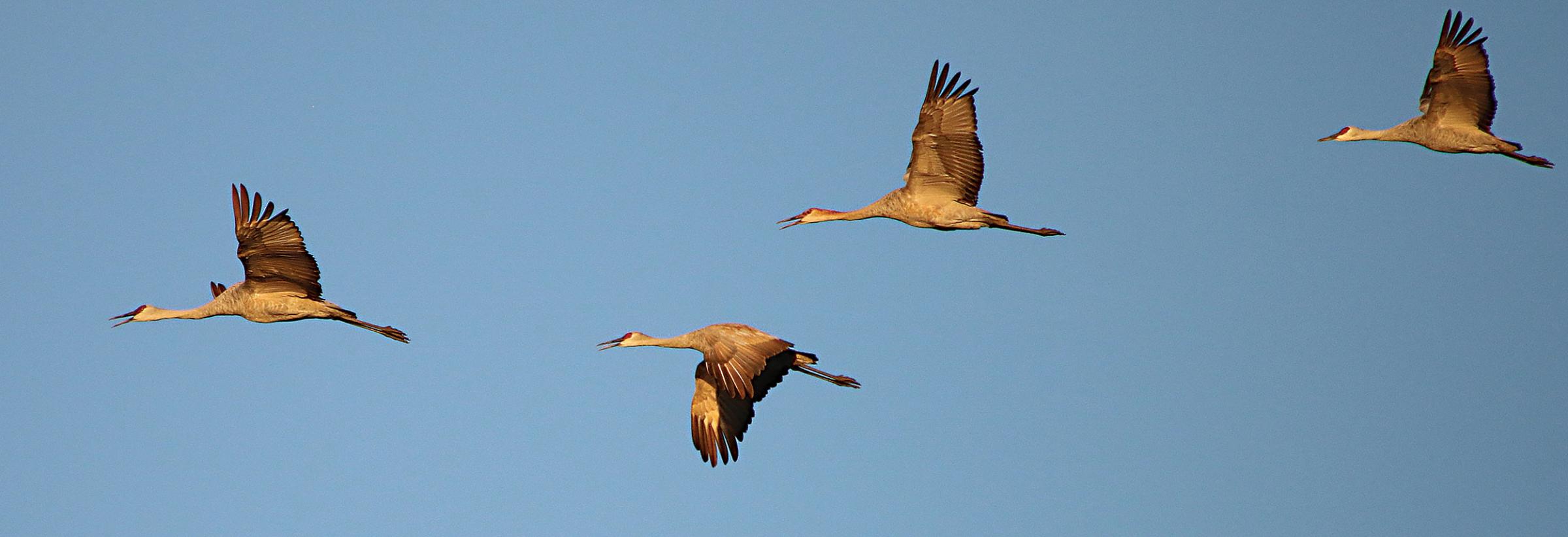
Back Cast
Unlike what it says on the sideview mirror on my pickup about objects being closer than they appear, the reality with sandhill cranes migrating in spring to northern nesting sites is typically the opposite.
To the human ear, the loud, rattling calls cranes emit in flight makes it seem like the birds should be close enough to easily spot. Yet, oftentimes the big birds simply appear as specks, a sprinkling of pepper flakes circling at nosebleed heights.
Biologists explain that sandhills rely on thermals and tailwinds to usher them along. These rising columns of warm air and southerly winds can help propel the birds 200 to 300 hundred miles in a day, and sometimes much farther when the conditions are good.
Like a lot of things in nature, the feat associated with the timely urge the birds feel to point their bills north, while outstretching their legs south, is impressive. When the monogamous pairs finally do touch down and select nesting sites, they’re likely somewhere in Canada, maybe Russia.
While I don’t need migrating sandhills to remind me that it’s time to go fishing, the tall, long-legged birds showing up when they do reminds me of fishing in spring as snowmelt works its way downhill and the ice rots and pulls away from shorelines.
Depending on the year – and it certainly differs from year to year – when winter finally cries uncle to warmer temperatures, I’m guessing the sandhills I hear call from dizzying altitudes are likely birds bringing up the rear of the migration, as these birds begin their march through North Dakota in the third week of, well, March.
Yet, at that time in North Dakota, there’s typically little open water fishing if you don’t count the parade of anglers from both here and far on the Missouri River, which flows in the opposite direction the cranes are headed.
Years ago, while wading in late July in a hard-running river that seemed in such a hurry to dump into the Yellowstone 50-plus miles north, the familiar, kar-r-r-r-o-o-o call of sandhills rattled above the noise of the rushing river. Instinctively, I tilted my head back, shaded my eyes with my hand and searched with no luck for passing sandhills that seemed so out of place at 6,000-plus feet in the mountains.
I continued to hear the birds as they called unevenly, now and again, as I worked my way upstream to my vehicle. Eventually, I cut through a break in the timber into a big meadow that would take me 10 minutes to cross, before having to negotiate a fence to meet the road.
I’ve seen grizzly and black bears in this general area over the years and more whitetails in the river bottoms than I’d hope to ever remember. Yet, I couldn’t have been more surprised to spot across the meadow three standing birds, two taller than an obvious juvenile colored a rusty brown, similar in tint to the river during runoff.
It was later explained to me that the cranes I saw in the mountains were from the Rocky Mountain population, while those that migrate through North Dakota are from the Midcontinent population.
Different populations separated by geography.
While that’s entirely true, these big, boisterous birds remind me of fishing no matter the elevation I’m wetting a line at.
